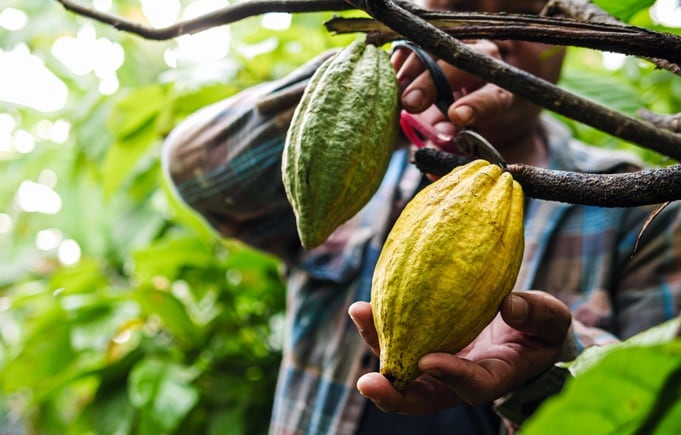Cocoa prices have soared to unprecedented levels this year, hitting a record high of $10.75 per kilogram on January 31 – the highest price seen in 60 years. This follows a turbulent first half of the 2024/25 fiscal year, when prices nearly doubled compared to the same period last year.
The industry’s ongoing volatility has left manufacturers with few ways to shield themselves from rising costs. Traditionally, the futures market offered some protection against price hikes. But with the market now inverted, that safety net is slipping away. Confectioners are left with a tough choice: lock in cocoa at these elevated prices or gamble on future market movements and risk even greater cost uncertainty.
As this crisis deepens, global chocolate giants are being forced to cut production. After battling the effects of climate change, the El Niño weather pattern and widespread crop disease over several seasons, the financial impact is now impossible to ignore.
“The intense cocoa bean price volatility significantly impacted the industry, customer behaviour and our financial performance in the first half of 2024/25,” says Peter Feld, CEO of Barry Callebaut Group.
Barry Callebaut lowers production expectations
In its half-year results, Barry Callebaut confirmed it is revising its production outlook, forecasting a mid-single-digit drop in sales volumes for 2025. The company sold just over 1m tonnes in the first half of the fiscal year – down 4.7% year on year – as soaring cocoa prices weighed on demand.
Global cocoa sales volumes have fallen by 5.6%, with Barry Callebaut attributing the decline to tight supply and weakened demand caused by higher prices. This trend has been felt most strongly across Asia, the Middle East and Africa (AMEA), and Central and Eastern Europe (CEE).
Chocolate sales volumes fell by 4.5%, and according to Nielsen data, the sector is now officially in decline. Market instability has driven up prices, lowered order volumes and triggered short-term shifts in customer behaviour – all of which have directly impacted production.
A mixed picture for global chocolate markets
Despite these challenges, not every market is shrinking. Latin America delivered the strongest growth, with sales volumes up 7.5%. AMEA followed with a 1.8% increase, boosted by double-digit growth in India, Indonesia and the Middle East.
However, Western Europe saw volumes slump by 7.6% as high prices and changing customer behaviours – such as bringing production back in-house and cutting product ranges – took their toll. Central and Eastern Europe also struggled, with production falling 6.6%, particularly in Turkey. North America experienced a more modest decline of 2.3%, driven by weaker demand from large food manufacturers.
Despite these headwinds, Feld says Barry Callebaut is strengthening its supply network in North America and plans to significantly expand its US production capacity.
Safeguarding profitability
Describing the current environment as “the new market reality,” Feld says the company is taking decisive steps to improve its financial model, strengthen its market position and drive higher returns.
Barry Callebaut expects double-digit EBIT growth in local currencies this year. Protecting its operating profit remains a core priority, despite lower demand driven by high cocoa prices. In the first half of 2024/25, the company achieved an operating profit of $401m (€353m), a modest recurring increase of 1.5%. However, higher financing costs and delays in passing price increases on to customers have affected its net profit.
The company has also committed to maintaining its dividend per share at last year’s level as it moves forward with its Next Level transformation programme. Announced in September 2023, this $608m (€535m) investment is designed to improve efficiency and better serve key customers. The programme is expected to generate annual savings of $305m (€268m), helping to support margins and cash flow, although these benefits are unlikely to appear on the bottom line until next year.
As part of this transition, Barry Callebaut is adjusting its pricing strategy to reflect higher capital needs, reducing debts by selling assets, and working to improve returns on invested capital.
Other confectionery giants feel the squeeze
- Mondelēz International warned earlier this year that record cocoa prices would have a major impact on earnings. In February, it forecast a 10% drop in adjusted earnings per share, despite efforts to limit the impact of rising costs. While revenues have held up better than expected, both volumes and profits have come under pressure.
- The Hershey Company also reported a difficult start to 2025. In its first-quarter results, the company posted a 26.6% decline in its confectionery segment value, down to $696m (€616m), citing lower sales volumes and rising production costs. On top of that, recent US tariff hikes have added further pressure, disrupting cocoa supplies and pushing costs even higher.



